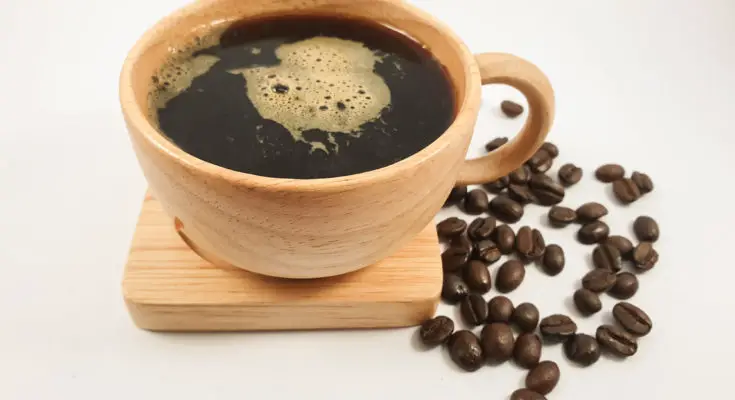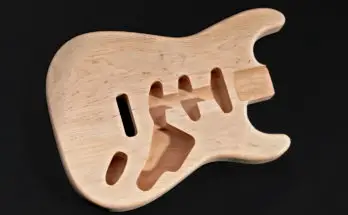Wood carving has become quite popular among woodworkers. However, there is more to wood carving than the love for antiquities and tradition itself. Woods are the natural building material for a variety of purposes, ranging from large house and cabin structures to common household utensils.
Likewise, wooden cups or mugs are a sheer representation of the love for wood carving when it comes to having a drink in the traditional way. Nowadays, people search for various ways to spend their time and take up skill-enhancing hobbies. It is not surprising that wood carving is becoming a highly sought-after option.
It is not just the love for wood or crafting skills but also the idea to improve one’s survival skills and boost self-confidence by creating wooden drinking mugs and/or cups.
Are Wooden Cups Safe to Drink From?
Wooden cups are an attractive addition to a set of rustic drinking utensils. However, despite their visual appeal, traditional value, and often their antiquity, they are not entirely water-resistance. In fact, most of the wood types for carving a mug or cup require waterproof sealants to help them make it safe for drinking.
Water can warp and crack the wood of mugs or cups. The good news is, there are waterproof sealants available in the wood markets in the counties of different states. Bear in mind that only a few specific ones are non-toxic and make the wooden cups/mugs safe for drinking.
Similarly, consider coating your wooden mugs/cups with non-toxic waterproof sealants to prevent wood damage. So, you can enjoy your drinks in your personally designed, wood-carved mug/cup.
Best Woods for Carving a Cup/Mug
Here are some of the best wood types to suit your wood carving needs, whether you are a beginner or a pro. These woods can create some mesmerizing finishes while providing a safe option for having your favorite drink in your preferred manner. So, let’s get started with the first one!
Cherry
Cherry wood may not be as easy to work with in comparison to other woods. However, they are an excellent option if you want to go for a classy and attractive look. Cherry comprises gentle curves when sliced (easy to slice) while featuring a reddish-brown or reddish color. Woodworkers regard it as an attractive yet difficult wood class.
Cherry is optimal for hand carving tools and may suffer burns from power tools. Being an expensive wood carving option, cherry shrinks once it starts drying. More so, cherry wood ages and is easily noticeable with the darkening of its attractive reddish shades (i.e., they turn dark and black). Cherry wood is generally ideal for details. So, if you are looking to add texture and amazing finishes to your wooden cup/mug, cherry would be a fantastic option.
Basswood
When it comes to wood carving your favorite objects, basswood is a top choice of many wood carvers. Basswood is likely to be soft as it presents easy slicing when getting it into shape. However, this makes it a less viable option for mugs and cups unless you want to create fine pieces for showcasing.
Furthermore, basswood rarely chips and/or splits during carving/whittling. The best natural sources are basswood trees if you have them nearby. They are the fine-grain wood type which makes them ideal for classy finishes and exemplary textures. Even grains, white wood texture, and a slight touch of light-brown shades make basswood a great option.
You shouldn’t necessarily opt for the hardest wood to craft the best wooden mug or cup right away. In fact, you can try to practice your carving hand with the soft basswood and move from simple to complex carving techniques for better final results.
Cedar
Cedar is popular as a colorful wood that has various shades and colors. It can be reddish, light-red, pink, and, rarely, it may also have light purple colors and shades as dark spots. Cedar wood carving is suitable for beginners, just like it is for experienced whittlers.
One thing to know about wooden cedar cups and mugs is that not only do they provide attractive visuals but also aromatic scents. The wonderful scents are slightly crispy, sweet, and nocturnal in nature. As the wood is hard and provides better practice for your hand carving, you should avoid applying finishes, unlike the other woods.
Why should you do that? Well, if you want to preserve that natural scent, consider no finishes that will eliminate or seal the wood’s fragrance. Nonetheless, you may look for non-toxic waterproof sealants that can make cedar mugs or cups safe for drinking. They are widely available throughout wood stores.
Black Walnut
Black Walnut is among the highly sought-after wood class among carvers for its mesmerizing fine grains. Walnut wood is commonly rich in color and shades that present a unique outlook. What’s more, the quality of walnut wood might vary depending on the type of growing technique, soil, and location.
Normally, they have caramel and light brown shade, but you may also find them in darker and more vibrant coffee colors. Additionally, they also feature appealing purple shades in some varieties. Thus, you have plenty of colors, textures, and grain qualities to choose from when carving your wooden mug/cup. Walnut wood is dense and requires slightly more effort when carving than other wood types.
Do not tire yourself using the dense, expensive power tools for carving highly attractive walnut wood mugs or cups. Instead, use softwood options to gain experience if you’re a beginner.
How Do You Safely Waterproof a Wooden Cup/Mug?
While excessive water is damaging to wooden utensils like drinkware (e.g., mugs and cups), waterproof sealants require careful selection to prevent toxicity. Thus, choosing the appropriate water repellant/sealant is vital.
Applying a food safe water sealant is very easy to do. The sealant is applied no different than other stains. It is recommended that you use gloves during application.
The first step in applying the sealant, is to make sure you cup/mug is clean. You’ll want to get a damp rang and wipe the cup to ensure all the saw dust has been removed. Once dry, you are good to being applying the water sealant.
Once it’s dry, you can start sanding the surface with self-lubricating sandpaper. Consequently, add more coats of the sealant and repeat the process multiple times (ideal: 4 times, i.e., 4 coats).
Safely waterproofing your wooden cup or mug is essential as it will allow you to have peace of mind that there are little to no chances of toxicity and wood damage. Moreover, you should know that oil is also a good option if you want to protect your wooden cup or mug besides other sealants. Rubbing the oil and letting it dry can yield attractive looks and an aesthetic appeal.
Conclusion
The job may not be difficult if you are an experienced woodwork craftsman. But for those who are new to wood carvings or wooden cups or mugs, this article can provide guidance to kick-start your woodwork activity.
As a healthy hobby, it can enhance your precision, hand energy, hand movement, arm flexibility, and, more importantly, your mental well-being. What’s more, it can help pass time and create beautiful pieces if you are a fan of old-age woodcraft.




